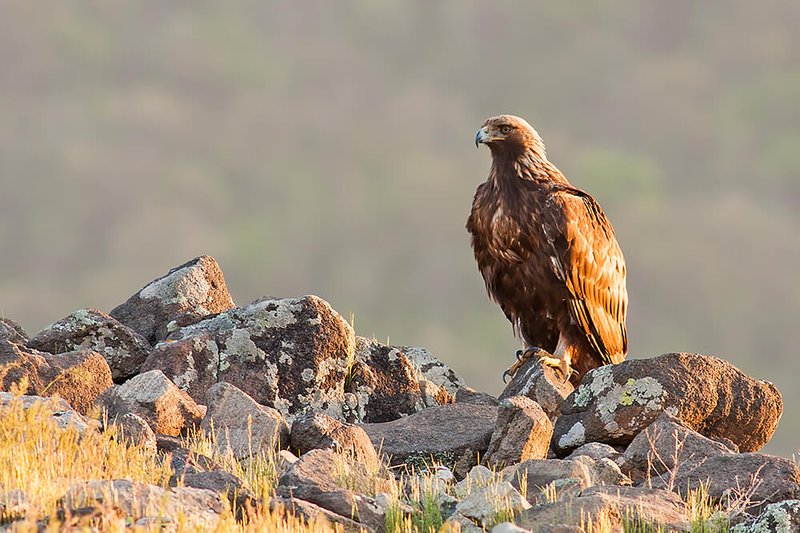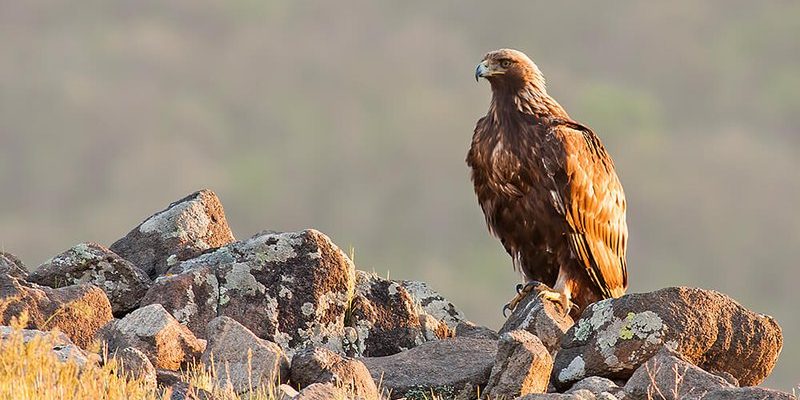
These birds are more than just skilled hunters; they are survival experts. Their adaptations are a fascinating blend of physical traits and behavioral strategies that allow them to navigate the challenges of their habitats. From mountains to grasslands, golden eagles showcase a remarkable style of living that keeps them at the top of the food chain. So, let’s delve into the world of golden eagles and explore how they adapt to their environment.
Physical Adaptations for Hunting
Golden eagles are equipped with a suite of physical features that make them exceptional hunters. First off, their powerful beaks are specially designed for tearing through flesh and bone. This is especially useful when they go after prey like rabbits and even larger mammals. These birds possess sharp talons that can exert incredible pressure, allowing them to grasp and immobilize their catch.
They also have excellent vision—in fact, their eyesight is estimated to be four to eight times better than humans. This stellar vision enables them to spot potential prey from great distances, soaring high above the ground. As they glide on thermal updrafts, they can search vast areas effortlessly. The combination of precise vision and powerful hunting tools ensures that when golden eagles decide to snag dinner, they do so with remarkable efficiency.
But it doesn’t stop there. Their strong wings are adapted for soaring long distances. Golden eagles can travel hundreds of miles in a day, searching for food and scouting their territory. This ability to cover a lot of ground helps them adapt to the availability of prey across different habitats, ensuring they always have a source of sustenance.
Choosing Their Habitat
Golden eagles are selective about where they call home, which is another way they adapt to their environment. They thrive in a variety of landscapes, from rugged mountains to expansive plains. Each of these habitats comes with its own set of challenges and opportunities.
Mountains are a prime example of a preferred habitat. The rocky cliffs provide perfect nesting spots, as well as vantage points for hunting. The high altitudes allow golden eagles to take advantage of wind currents, which help them soar without expending much energy. On the flip side, they can also be found in more open grasslands where they can spot their prey easier and hunt over larger distances.
When it comes to nesting, golden eagles often look for elevated locations. They build large nests—sometimes reused for years—which provide a safe environment for their young. These nests are typically placed on cliffs or tall trees, where they are less vulnerable to predators. This strategic selection of habitat ensures both safety and access to ample food.
Adaptations in Behavior
In addition to their physical traits, golden eagles exhibit remarkable behavioral adaptations. For instance, they are highly territorial and will defend their hunting grounds against intruders, which ensures they have enough food to sustain themselves and their offspring. This assertive behavior is vital in preventing competition with other birds.
Their hunting techniques are also varied. Golden eagles often prefer to hunt in pairs or family groups, which increases their chances of success. Working together allows them to corner prey more effectively, making it easier to take down larger animals. This cooperative behavior showcases their adaptability in social dynamics and hunting strategies.
You might wonder how they manage to find food throughout the seasons. Golden eagles adapt their diet based on availability. In winter, when smaller animals might be less accessible, they might target carrion—leftover carcasses from larger animals. This flexibility in diet helps them weather changes in their environment and maintain their energy levels.
The Role of Migration
While many golden eagles are sedentary, some populations migrate seasonally, which is another fascinating adaptation. When food becomes scarce in colder months, some golden eagles will journey to warmer regions where prey is more abundant. This migration can cover thousands of miles and showcases their impressive stamina.
Migratory golden eagles often travel alone or in small groups, relying on thermal updrafts to conserve energy during their long flights. Their migratory patterns are influenced by environmental cues, like changes in temperature and food availability. This ability to respond to their surroundings emphasizes their resilience in the face of changing conditions.
Even local movements can be critical to their survival. Golden eagles will often shift their hunting grounds as prey populations fluctuate. By staying adaptable to their environment in both mobility and behavior, they ensure their place at the top of the food chain.
Conservation and Human Impact
Unfortunately, golden eagles face challenges not just from nature but from human activity as well. Habitat destruction, lead poisoning, and wind turbine collisions are significant threats to their populations. Conservation efforts aim to protect their habitats and educate the public about the importance of these magnificent birds.
Protecting their nesting sites is crucial. Conservationists work to establish protected areas where golden eagles can thrive without the pressure of human encroachment. By raising awareness and encouraging responsible land use, we can help ensure that golden eagles continue to adapt and flourish in their environments.
Moreover, understanding their behavior can help in creating effective conservation strategies. For example, knowing their migration patterns can lead to better planning of human developments, allowing us to coexist with these incredible birds. Through these efforts, we can appreciate golden eagles not just as symbols of nature’s beauty, but as vital players in our ecosystems.
The Future of Golden Eagles
Looking ahead, the future of golden eagles hinges on our ability to adapt alongside them. As we face climate change and habitat loss, it becomes increasingly important to commit to sustainable practices that consider wildlife needs. By creating a balance between development and conservation, we can ensure that these birds continue to grace our skies.
It’s inspiring to think about how golden eagles, with their remarkable adaptability, remind us of the resilience found in nature. Their ability to thrive in various environments speaks volumes about their strength and ingenuity. The next time you catch a glimpse of a golden eagle soaring overhead, remember that it’s not just a majestic bird; it’s a symbol of adaptability and survival.
In the grand tapestry of life, golden eagles show us that with the right adaptations, it’s possible to navigate even the most challenging environments. So let’s celebrate these incredible birds and support efforts to protect their habitats. After all, every eagle soaring above us is a testament to nature’s power to adapt—and perhaps, so can we.

